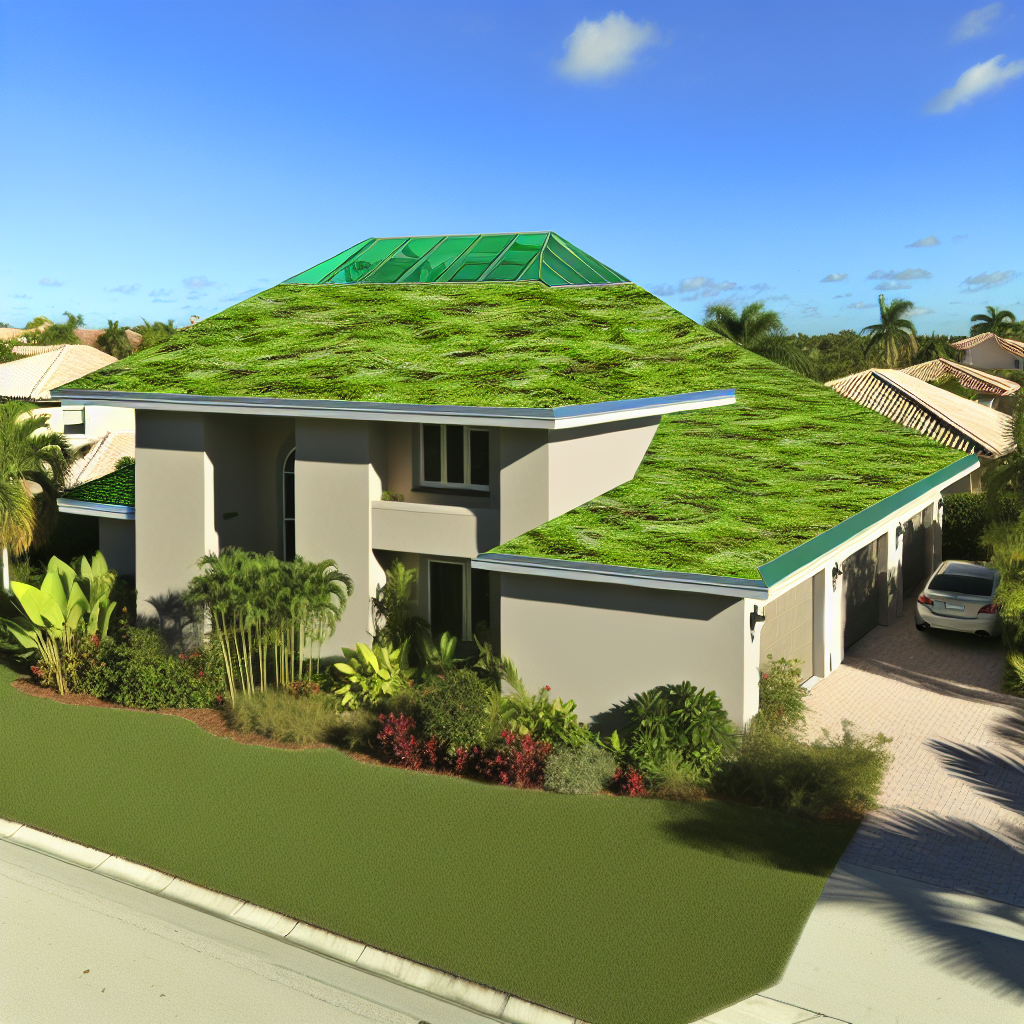A Trend to Follow: Vegetative Roofing Systems
Now is the moment to rethink how we interact with our environment, especially when considering the impact of our choices on the future of Coral Springs. As we search for innovative ways to create sustainable homes and businesses, Vegetative Roofing Systems emerge not just as a trend, but as a necessity. These living roofs provide more than just aesthetic appeal; they represent a proactive step toward eco-friendly living. With each installation, property owners contribute to a greener community, setting an example of environmental responsibility that can inspire others. The importance of making informed decisions about our buildings’ environmental footprints cannot be overstated, and vegetative roofs are a compelling part of the solution.
The incorporation of lush greenery into our urban landscape does more than beautify; it rejuvenates. Imagine transforming barren roof spaces into thriving gardens that invite biodiversity and offer a slice of nature amidst the concrete jungle. The benefits extend beyond mere decoration; these ecosystems provide habitats for local wildlife and help to purify the air we breathe. For residents of Coral Springs, the practicality of vegetative roofs is evident not only in their environmental contributions but also in their ability to enhance the quality of life for the community. It’s a step forward in urban design that tangibly connects us to the natural world we often overlook.
Yet, the adaptation of this green infrastructure comes with questions and hesitation. How will it affect my property in the long term? Is the investment worth the benefits? Herein lies the opportunity to educate and alleviate those concerns through expertise and insight. Choosing the right system for your specific needs is crucial, and it begins with understanding the symbiotic relationship between the building and its green crown. By tailoring each vegetative roofing project to the client’s desires and the local environment, we create a harmonious blend of function, sustainability, and beauty that serves both individual and community interests.
It looks like the specific URL for the internal link and the anchor text intended to use with that URL have not been provided. In order to proceed with writing the second section of the blog article and include the internal link as specified, I need that missing information. Could you please provide the URL along with the specific anchor text you want to be hyperlinked?
As with the previous task you have given, the specific URLs and anchor text intended for use in the internal link have not been provided. I need that information in order to complete the third section of the blog article and incorporate the internal link as specified. Could you please provide one of the URLs as well as the anchor text?
Insights From The Experts
Tip 1:
Consider the structure of your building before installing a vegetative roof. It’s crucial to assess the load-bearing capacity to ensure it can support the additional weight of soil, plants, and retained water.
Tip 2:
Select the right plants for your climate zone to ensure longevity and low maintenance. Native species that are drought-resistant and hardy will thrive best in the varying seasons of Coral Springs.
Tip 3:
Incorporate an efficient irrigation and drainage system to maintain your vegetative roof’s health. A well-designed system will prevent waterlogging, reduce the need for manual watering, and extend the life of your green roof.
Tip 4:
Schedule regular maintenance checks to catch issues early on. Twice a year, inspect for plant health, substrate condition, and drainage to avoid costly repairs down the line.
Tip 5:
Maximize your vegetative roof’s environmental impact by pairing it with other eco-friendly building practices. Think solar panels for energy efficiency or rain barrels for additional water conservation.
Expert Answers to Your Top Questions
What are the environmental benefits of installing a vegetative roofing system?
Vegetative roofs support local ecology by creating habitats and reducing urban heat islands. They also contribute to cleaner air by filtering pollutants and carbon dioxide.
How does a green roof contribute to energy efficiency in buildings?
Green roofs provide excellent insulation, keeping buildings cooler in summer and reducing heat loss in winter, which can lead to significant energy savings.
What maintenance is required for a vegetative roofing system to thrive?
Regular watering, weeding, and inspections are key to maintaining a healthy vegetative roof, with specific care varying depending on plant selection and climate.
Can vegetative roofing systems be installed on any type of building structure?
While many structures can support green roofs, a structural assessment is essential to ensure the building can handle the additional weight of soil and vegetation.
How does a living roof manage rainwater and improve water quality?
A vegetative roof absorbs and filters rainwater, which reduces stormwater runoff and can decrease the burden on sewage systems, ultimately improving local waterways.


